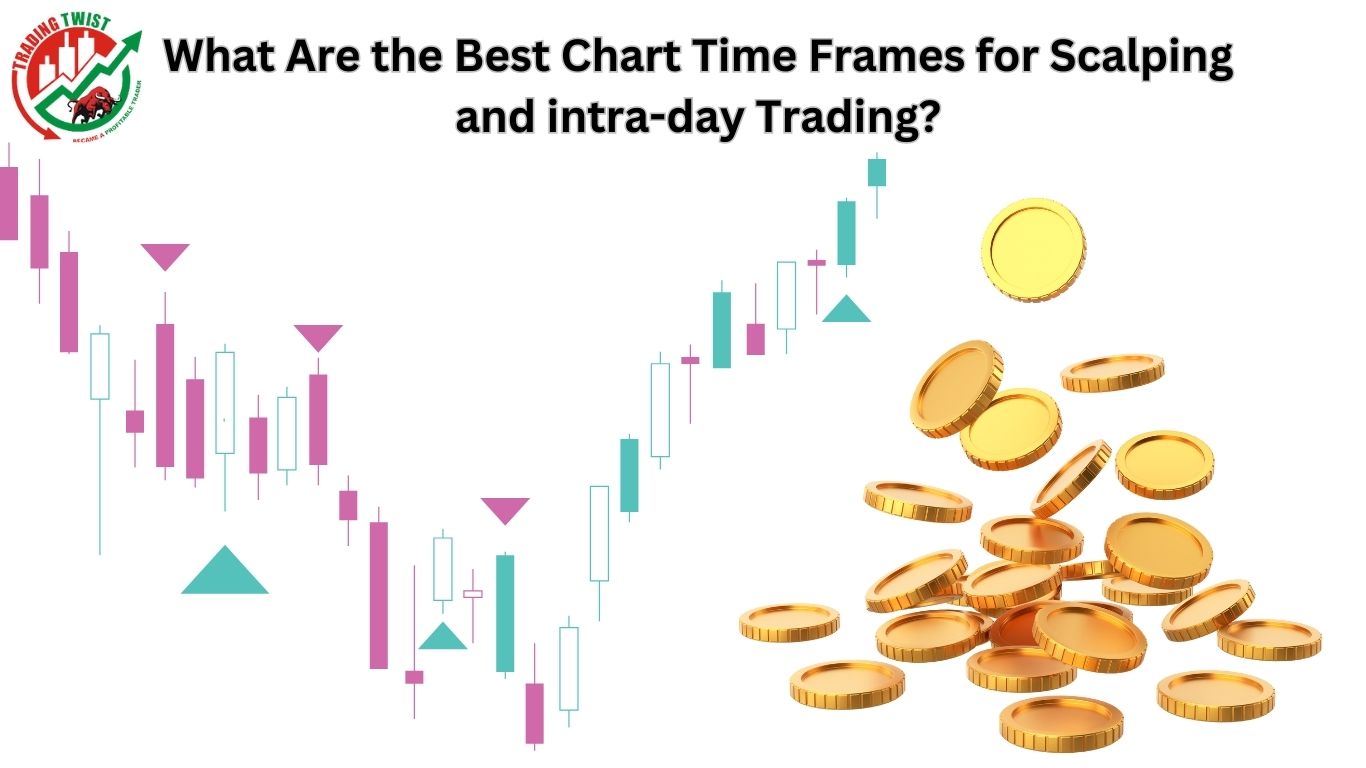
Chart time frames refer to the duration of time represented by a single candle or bar on a price chart. Scalping and intra-day trading is popular trading styles that involve making quick trades within a single trading day. Scalping involves making multiple trades within a very short period, sometimes just seconds, to make small profits. On the other hand, intra-day trading involves holding trades for a few hours to capitalize on price movements during the trading day. Both styles require traders to have a good understanding of chart patterns, market trends, and technical indicators to make profitable trades. One of the critical factors that can affect the success of scalping and intra-day trading is the chart time frame used.
Understanding Chart Time Frames
Chart time frames refer to the duration of time represented by a single candle or bar on a price chart. Common chart time frames include 1 minute, 5 minutes, 15 minutes, 30 minutes, 1 hour, 4 hours, daily, weekly, and monthly. Each time frame shows the price action of a particular asset over a specific duration of time. Traders use chart time frames to analyze the market, identify trends, and make trading decisions.
Factors to Consider When Choosing Chart Time Frames for Scalping and Intra-day Trading
When choosing chart time frames for scalping and intra-day trading, traders need to consider several factors, including the volatility of the market, the trading style, and the amount of time they can dedicate to trading. Scalpers may prefer shorter time frames, such as 1 or 5 minutes because they allow them to make quick trades and capture small price movements. In contrast, intra-day traders may prefer longer time frames, such as 1 hour or 4 hours, to capture more significant price movements and avoid noise.
Best Chart Time Frames for Scalping
The best chart time frames for scalping are generally shorter time frames, such as 1 or 5 minutes. These time frames allow traders to capture small price movements and make quick trades. However, using shorter time frames can also result in more noise and false signals, which can be challenging to navigate. Traders may need to use technical indicators and price action analysis to filter out the noise and identify profitable trades.
Best Chart Time Frames for Intra-day Trading
The best chart time frames for intra-day trading are typically longer time frames, such as 1 hour or 4 hours. These time frames allow traders to capture more significant price movements and avoid noise. Traders can use technical indicators and price action analysis to identify trends and make trading decisions. However, using longer time frames can also result in missed opportunities for quick trades.
Pros and Cons of Different Chart Time Frames for Scalping and Intra-day Trading
Using shorter time frames for scalping can result in quick profits, but it can also lead to more noise and false signals. Using longer time frames for intra-day trading can result in more significant profits, but it can also lead to missed opportunities for quick trades. Traders need to find a balance between the benefits and drawbacks of different chart time frames based on their trading style and preferences.
Tips for Using Chart Time Frames in Scalping and Intra-day Trading
When it comes to using chart time frames for scalping and intra-day trading, there are a few tips that can help improve your chances of success. Here are some of the key things to keep in mind:
Consider the volatility of the market: The more volatile a market is, the shorter the time frame you may want to use. This is because price movements can be more rapid and significant in volatile markets, so you need to be able to react quickly. On the other hand, less volatile markets may require longer time frames to see meaningful price movements.
Be aware of news events: Major news events can cause sudden and significant price movements, which can disrupt your trading strategy. If you’re trading during times of heightened news activity, you may want to use shorter time frames to minimize your exposure to such events.
Use multiple time frames: While you may have a preferred time frame for your trading strategy, it’s often helpful to also look at multiple time frames to gain a broader perspective on the market. This can help you identify trends and potential areas of support and resistance.
Adjust your time frame as needed: Don’t be afraid to change your time frame if your strategy isn’t working. For example, if you’re finding that you’re constantly getting stopped out of trades on a shorter time frame, it may be worth moving up to a slightly longer one to give your trades more room to breathe.
Stick to your strategy: Regardless of which time frame you use, it’s important to have a well-defined trading strategy and to stick to it. This can help you avoid emotional decisions and stay disciplined in your trading.
Conclusion
Choosing the Right Chart Time Frame for Your Trading Style:
The chart time frame you choose for your scalping or intra-day trading will depend on a variety of factors, including your trading style, the volatility of the market, and your personal preferences. While there is no one “right” time frame for everyone, it’s important to choose a time frame that aligns with your trading goals and strategy.
As we’ve discussed, shorter time frames can be useful for scalping and intra-day trading, as they allow you to react quickly to price movements and take advantage of short-term opportunities. However, longer time frames can also be helpful for gaining a broader perspective on the market and identifying long-term trends.
Ultimately, the best way to determine the right chart time frame for your trading style is through practice and experimentation. By trying out different time frames and keeping track of your results, you can gain a better understanding of what works best for you and adjust your strategy accordingly. Remember to stay disciplined, have a well-defined trading plan, and be patient as you work to refine your approach over time.








